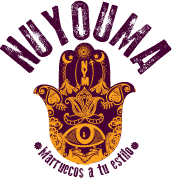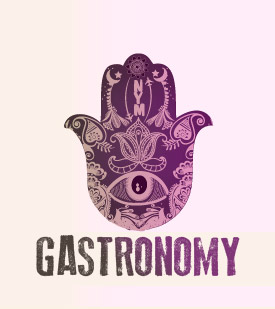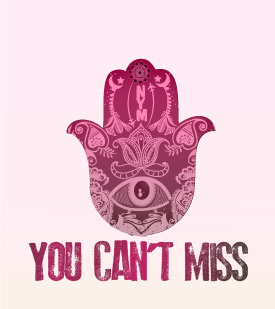When you get a taste of Moroccan cuisine you will feel as if you were eating recipes from centuries ago, with distinctive cultural traits, like the Sephardic’s, the sub-Saharian’s or the Oriental’s. Moroccan’s diverse gastronomy goes beyond couscous and mint tea, it comes from the ancient Berber dynasty.
You may think Moroccan cuisine is low-budget and homely but its roots come from its splendid Middle-aged days, when Morocco was the leading power in the Mediterranean. It is made by women- except for the tangiya that is men’s exclusive- and its recipes are passed down by the word of mouth. The main meal is eaten at midday (not during Ramadan, of course), the diffas (feasts) take place in weddings, birthdays and religious celebrations, as well as the return of faithful who went to Mecca.
Moroccans use the first three fingers of the right hand to eat, except for cuscus and soups that are eaten with spoon. The most used utensil to cook is the tagine, a large pottery pot which you can directly cook over fire. The meals cooked with it are named also tangine, they are mostly stews and vegetables. Morocco is rich in quality vegetables, nuts (such as dates, walnuts, raisins and almonds), citrus (the best oranges of all over the world) and in the coastal areas seafood and fish. The most popular meats are lamb and chicken and they can be eaten in many ways: tagine, marinated, grilled (kebabs), stewed or stuffed.
You will find a lot of spices in every market from Morocco, and they are often served as a mix called ras al hanut. Mint, parsley and coriander are ingredients that appear frequently in Moroccan cuisine. Just as in the Mediterranean, Moroccan cook with olive oil and, on rare occasions, with Argan oil. Both couscous and pita bread are the basic food in Morocco.
Sweets are another reason to travel to Morocco: honey-almond-based pastries, excellent fruits and natural flavours (the most known are rose water and orange flower water) are the main ingredients for its amazing bakery.
And lastly, green tea, the most important beverage of Morocco, served five times a day, with lots of mint and sugar.
Traditional food
Tangiya
Tangiya is the star dish of Marrakesh. It’s a lamb stew spiced with traditional seasoning and lemon that is cooked in a pottery pot, also named tangiya. It has to be simmered in a wood-fired-oven, or farnatchi.
Although it isn’t a specific dish for any celebration, tangiya is a classic at friend reunions and one of the reasons to travel to the Red City. Traditionally men are the only ones that should cook it.
Bisteeya
A cuisine speciality in Morocco is to mix salty and sweet flavours and the Bisteeya is the proof of this fact. It is considered one of the most sophisticated dishes of Morocco. The bisteeya is a pie made with combined layers of werga (crêpe-like pastry), chicken or fledgling pigeon with egg and almonds. It’s a typical dish from Fez, and it is served with cinnamon and sugar.
Madfouna
You can find pizza in Sahara, a really good pizza indeed. They are called madfouna or Berber pizza and they are made with two flat round bread doughs and a mixture of meat, vegetables and hard-boiled eggs between them. This pizza, which’d better be called pie, is typical from Merzouga region and it is cooked over a fire set on the floor, buried in the desert sand (actually madfouna means buried).
Chermoula
Chermoula is a very popular marinade in the Moroccan coast. Ingredients change depending on the region as it is a traditional recipe, although you will always find fresh coriander, oil and garlic in it. Chermoula usually has spiced lemon (a classic from Morocco), onion, olives, spices and a little heat. Chermoula is used as a seasoning for grilled or tagine fish and it is really savoury.
Couscous
Couscous has a Berber origin and it is one of the most important elements of North-Africa’s gastronomy. It is cooked daily with the famous couscousiers, and it’s a side dish for vegetables, legumes, chicken, lamb, veal or fish. It can be served as well as a dessert with some milk and sugar.
Harira
In the Atlas Mountains the winter is harsh and a broth is welcomed. The most popular one is the harira, made with meat, egg, noodles, tomatoes and legume and it is served hot and as a main dish. Moroccans eat it at iftar hour (when the sunsets during Raman celebration), to break the fast.
Veal Tagine
The tagine is one of the most amazing dishes of all Morocco and it is cooked on special occasions such as weddings or a familiar reunion. Like many Moroccan dishes it combines salty and sweet flavours mixing veal with almonds, prunes, sugar and cinnamon. The result will content even upper class costumers.
Kifta Tagine
This dish is cooked with minced veal mixed with onion and spices. It is shaped as meatballs sided by a sauce and eggs (which are let thicken). All the elements come together inside the tagine and the results are spectacular.
Fish Tagine
Having a fish Morocco is really frequent in any village by the 35 hundred kilometre coast. As the country has a large fishing heritage, the seafood is high quality and so are these types of tagine. You will understand what’s enchanting about this country when you taste sea bass and sea bream based tagine.
Briouat
These are triangle-shaped cupcakes that are filled with different ingredients, both salty and sweet. They are made with doughs of werga (like crêpe pastry) and fried, and they can have chicken or honey-almond pastry. The can be served hot and also cold, and found in the most sophisticated restaurants or street markets, and they are delicious.
Zaalouk
If you though the winter was harsh, it is because you haven’t heart of the summer. To bear with it Moroccans cook cold dishes. One of them is zaalouk, an fried aubergine based aperitif sided with other starters such as hummus and pita bread. If you want to forget about the hot temperatures, take a bite of zaalouk.
Berber Omelette
You would complete your culinary experience in the country when you had tasted the real Berber omelette, whose ingredients are- a part from egg- onions, pepper, tomatoes, spices and fresh herbs. There are regions that make it with beaten egg, but some others let the egg thicken. In any case, the omelette is a unique dish.
Moroccan bread: pita, msaman and harcha
Bread is the food Moroccans are proud of, and they should, as they have a lot of different types: sweet and salty. It is mainly made with flour, for example pita, with semolina and butter, which are the ingredients for msman (a crêpe eaten at breakfast), or with corn semolina like harcha bread, which is fried.
Mint Tea
It is nicknamed “Berber whisky” as a joke and it is the national beverage. The Maghreb mint tea, or peppermint tea is prepared with the Moroccan beautiful teapots (formerly they were made of brass or silver, and currently they are made of stainless steel). It is served five times a day, according to the tradition. However, having a cup of tea is a newer tradition than it is believed. It started in the ninetieth century when the British brought it from India.







